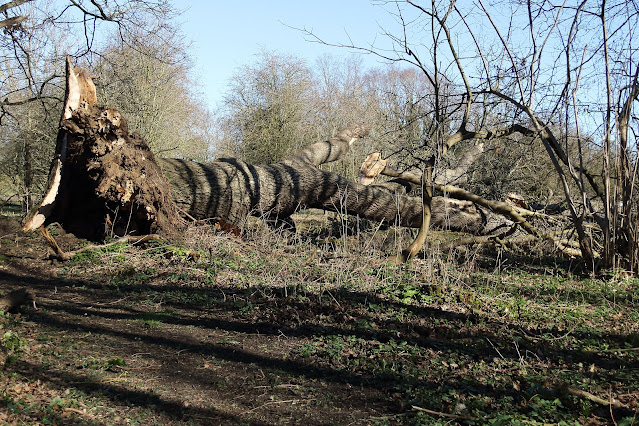February 2022
Amphibians and Reptiles
Reports of Smooth Newt from two
ponds in LA, and Frogspawn seen in another LA pond.
A quieter month, with
a total of 313 reports received containing 36 different species. Winter
visitors such as Fieldfare and Redwing continue to be seen, as
well as the first Brambling of the year.
A female Brambling
was spotted amongst Chaffinch under feeders on Lewis Crescent, first seen on 2nd
and then twice more. This finch is a winter visitor to the UK, most commonly
seen in gardens early in the year, before migrating north in April (see blog link).
The winter thrush continued to be seen regularly,
with small flocks of 5-10 Redwing and
4-5 Fieldfare seen on Church Lane
and the LSA, as well as a larger mixed flock of around 90 birds on the Perse sport
fields on 12th.
Blackcap were spotted towards the end of the month, with
a pair visiting the feeders on Lewis Crescent, and a male regularly visiting a
garden in the village centre. Interestingly, this month a Reed Bunting was also seen under garden feeders in both
Bourn Bridge Rd and Meadow Walk.
Goldfinch and Greenfinch
were regularly seen in flocks of up to 10-11 on feeders around the village, as
were smaller numbers of Chaffinch (generally 2-5). Small groups of Blue Tit, Great Tit and Long-tailed Tit
were also frequently reported, along with 1-2 Coal Tit in some
gardens.
Song Thrush and Dunnock were regularly
heard singing in several gardens throughout the month, as were 2-3 Robin and an occasional Wren, and groups of House Sparrow could be heard
chirping on sunny days. A few Starling were seen, as were 2-3 Pied Wagtail particularly in the paddocks on the LSA.
A Green Woodpecker
was seen in a Cambridge Rd garden, with 1-2
Great Spotted Woodpecker more regularly spotted at several garden feeders. One of
two Jay and Magpie were also frequently visitors to some gardens, with up to
five Magpie seen on the LSA.
Of the raptors, Red
Kite was the most frequently reported from sites all around the villages
with up to three being seen over Church Lane, and up to five Buzzard
were spotted riding the thermals. Three
reports of a Kestrel and one of a Sparrowhawk were received, and
a Barn Owl was heard screeching from the trees behind Lewis Crescent on
22nd.
Butterflies, Bees
and other insects
This month
saw the first Brimstone butterflies
appearing on 14th, with the first (and only) Small Tortoiseshell being spotted
on 26th.
Four reports
of Buff-tailed
Bumblebee, and a good number
of Seven-spot
Ladybird seen emerging
from foliage in the warm sunshine.
Mammals
Badger – two tracks seen in mud along the Old Carriage Road, suggesting a regularly used route.
Flora and Fungi
Wild Arum foliage showing well, and the first shoots of Dog’s Mercury appearing in Sluice Wood and Lagden’s Grove, GP. Snowdrop and Aconite continue to flower well at several sites around the villages, with the first Lesser Celandine and Sweet Violet flowers seen at the end of the month in Sluice Wood.
Rivercare
No reports this month.
Weather
In summary – February was stormy and wet. The worst of the storms came in the middle and end of the month with storms Eugene and Franklin, when wind speeds gusted to over 70 mph at times. The total rainfall was 59mm, so above average, and as a result the river has been running high but with no flooding. The highest temperature was 16 degrees C on the 1st, and the lowest being minus 2.6 degrees on the 11th.
Mike Bull, David Farrant, Gaynor Farrant, Jennifer Hirst, Len Mead, Andy Merryweather, Polly Merryweather, Freda Orgee, Brian Parris, Gill Smith, Richard Smith, Jade Taylor-Salazar, John and Maggie Turner, Derek Turnidge, Sally Turnidge.

















































